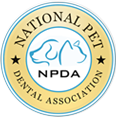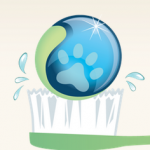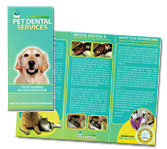“The services provided by Pet Dental Services have proven to be invaluable to our practice. Our clients appreciate the safety and convenience that non-anesthetic dentistry provides to their pets. Pet Dental Service’s staff is incredibly kind and patient with the pets in their care. Even some of our fearful patients are able to benefit from a full dental cleaning due to the gentle care provided by the PDS staff.”
The First Signs of Dental Disease in Cats
Dental disease in cats can be devastating. Periodontal disease is the most common form of dental disease for cats. The effects of dental disease can change a cat’s behavior, and your pet may begin to react completely out of character without offering much insight as to what is happening. Since our feline friends can’t talk, we have to watch carefully for symptoms of injury and disease. More advanced oral problems such as resorptive lesions and aggressive growths can be found in many felines. It is very important to have regular oral exams done by your veterinarian. Here are some early warning signs of dental disease in cats.
Breath
Bad breath may be the first symptom that cat owners will notice. Periodontitis and periodontal disease cause bad breath because bacteria forms between the gums and the teeth, which can become infected. The bacterium that is present causes a foul smell to emit from the cat’s mouth.
Eating
If your cat won’t eat, it could be a warning sign of dental disease. Gums and teeth become increasingly sensitive when dental disease in cats is present, making it painful for a cat to eat. Eating may slow or completely stop for a cat that has dental disease. While eating may not slow if the cat is accustomed to eating softer food, you may notice less chewing or discomfort during meal time. Some felines may even “huff” the food down quickly without chewing at all which can be a sign of discomfort.
Drooling
Dental disease in cats is frequently accompanied by noticeable drooling. This is due to the cat’s unwillingness to place any pressure upon the teeth. A cat with dental disease would rather leave their mouth open rather than lick their lips, gums or teeth.
Pawing
Since cats constantly like to clean themselves, it may seem normal when a cat paws at its face. However, a cat with dental disease may appear as though they are trying to take something out or away from their mouth.
More Significant Signs Of Dental Disease In Cats
As dental disease in cats progresses, cats will exhibit yellow deposits around teeth, puss around the gum line, and red and swollen gums. Eventually teeth will become loose and fall out. These signs are evident of a significant problem and immediate veterinarian care is necessary.
In order to prevent dental disease in cats, it’s essential to properly remove plaque from the cat’s teeth by gentle brushing and using a pet oral rinse. Get comfortable examining your felines mouth regularly so you can be proactive in maintaining a healthy mouth. Having regular veterinary dental checkups for your cat is the best way to prevent and detect the early signs of dental disease in cats.

 Dr. Melissa Byers
Lake Forest Animal Clinic
Lake Forest, CA
Dr. Melissa Byers
Lake Forest Animal Clinic
Lake Forest, CA







